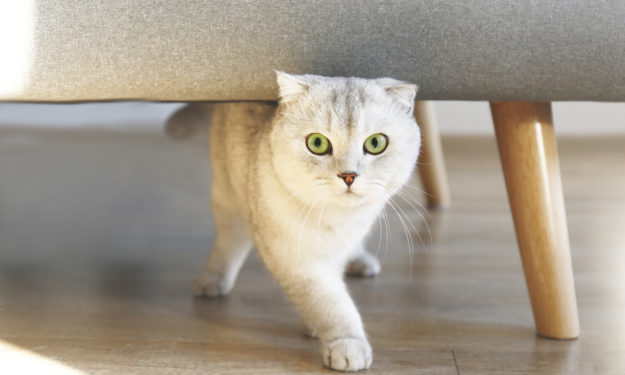Pet Friendly Household Cleaning Product Alternatives & Best Practices

It’s spring, and you know what that means…spring cleaning! As we all get motivated to clean our homes there is something to keep in mind: keeping your pets safe. Many common household cleaning products can be toxic to pets if licked off surfaces, chewed on, licked off their fur or paws, or used heavily around them.
Here are some of the most used household cleaning products and how to keep your pets safe when using them.
Bleach
Bleach is one of the most common cleaning products out there and is found in most homes. It’s important to know that if bleach is ingested, spilled on, or heavily inhaled in its concentrated form, it can cause life-threatening damage to your pet. If you MUST clean an area that your pet frequents with bleach, make sure that you use a diluted bleach solution and then thoroughly rinse the area and air out the room.
PET-SAFE ALTERNATIVE
A good alternative for bleach is baking soda. This can be used in place of bleach while cleaning and is safe for your pets!
Laundry Detergent
When doing loads of laundry, you may not think about the potential pet dangers that laundry detergent poses. Laundry detergent can get left behind on clothes, blankets, pet beds, etc., that your pet may lick off their just-washed bed or their fur after laying on your comforter and can be toxic. Fortunately, there are many nontoxic detergent products that can be used in place of traditional laundry detergent, especially those that are made with natural ingredients. Consider using pet-safe detergents at least for your pet’s belongings. If you do use regular laundry detergent, keep it out of reach from your pets and thoroughly check that no residue is left behind after washing.
PET-SAFE ALTERNATIVE
This natural pet cleaner is perfect for washing your pet’s belongings!
Floor Cleaners
Many common products promising to keep your floors clean are ultimately not safe for pets. If you’re mopping your floors and step away for a moment, your pet could try to play with, drink, or knock over the bucket of cleaning solution. Or if your dog walks over the floor while it’s still wet and lick their paws after, they could be poisoned. Fortunately, just like laundry detergent above, there are many non-toxic alternatives that are pet safe.
PET-SAFE ALTERNATIVE
Chewy offers a variety of pet safe cleaners here.
Toilet & Sink Cleaners
If your dog is sneaks into the bathroom to drink out of the toilet, or if your cat laps up water from the sink…this one is for you! Common bathroom cleaning products, such as Lysol or Scrubbing Bubbles, can contain phenols or ammonia that are toxic to your pets if they drink out of the toilet bowl or sink.
PET-SAFE ALTERNATIVE
For a natural, pet safe alternative, you can use a 50/50 vinegar and water solution to clean your toilet bowl and baking soda to clean your drains & sink.
Disinfecting Wipes & Sprays
Disinfecting wipes and sprays have become increasingly popular recently, but they can also contain ammonia or phenols that cause mild to severe irritation in pets. Don’t let your pet lick a surface that you have used it on until it is completely dry and open your windows when spraying large amounts.
PET-SAFE ALTERNATIVE
If you are using these wipes as a general all-purpose cleaner, there are pet safe alternatives for that! This all-purpose cleaner is safe around pets and children!
Best Practices for Cleaning Around Your Pets
- Keep your products as green and pet-safe as possible.
- Keep your pets out of the room while you’re cleaning.
- Keep pets away from any surfaces you’ve cleaned until they’re completely dry.
- Rinse floors with water after cleaning.
- Ventilate your home while using heavy-duty cleaning products.
- Make sure your garbage cans are sealed and safely out of reach from your pets.
- Store cleaning products & tools in high or locked cabinets and sealed closets.
Symptoms to Watch Out For
Symptoms can vary depending on which toxin has been ingested or inhaled. Watch out for symptoms such as:
- Gastrointestinal upset
- Skin or eye irritation/swelling
- Difficulty breathing
- Drooling
- Agitation
- Stumbling/incoordination
- Seizures
Written by Kelly Mankowich